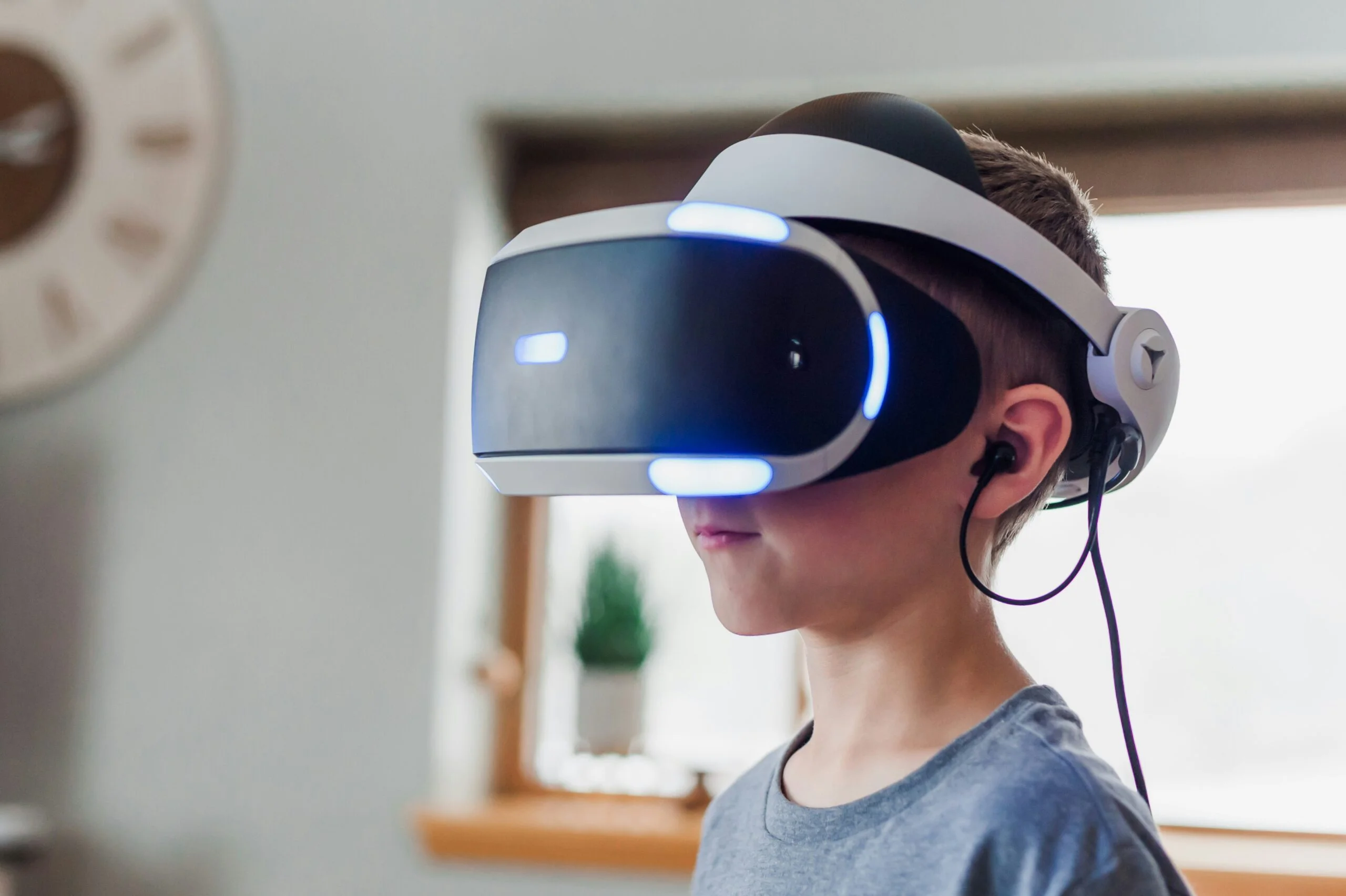Virtual Reality Technology: Exploring the World of Immersive Experiences
In this century, virtual reality has gained popularity. Both customers and IT enthusiasts are in love with it. This new technology can take us to new worlds. It can also give us immersive experiences like never before. But have you ever wondered what technology makes VR possible? In this article, we will explore the key parts. We will also cover the tech that enables virtual reality.
Head-Mounted Displays (HMDs)
A virtual reality experience’s Head-Mounted Display (HMD) is its central component. Wear the devices on the head. They often look like a pair of goggles. They have high-resolution screens. The user’s eyes have screens placed in front of them. These screens display the virtual environment, creating a sense of presence and immersion.
HMDs come in various forms, including tethered, standalone, and mobile. HMDs connect to a computer or gaming console via a tether. They provide great graphics and processing power. Standalone HMDs have built-in processors. They do not need a separate device for operation. Mobile HMDs use smartphones as their display and processor. They offer a portable VR experience.
Motion Tracking
Another crucial technology in virtual reality is motion tracking. It lets the system track the user’s movements. It then translates them into the virtual world. This ensures that the system reflects the user’s actions. It includes head movements and hand gestures.
There are several methods used for motion tracking in VR. One common approach is to use external sensors or cameras. They track the user’s position in physical space. These sensors capture the user’s movement. They relay the data to the VR system, enabling real-time interaction.
Another method is inside-out tracking. In it, the HMD itself has sensors and cameras to track the user’s movements. This removes the need for external sensors. It makes VR more convenient and portable.
Controllers and Input Devices
Controllers and input devices are crucial in virtual reality. They let users interact with the virtual world. These devices come in many forms. They include handheld controllers, gloves, or full-body suits.
Handheld controllers are the most common input devices in VR. They let users manipulate objects. They also let users navigate menus and do actions in the virtual world. These controllers often have buttons, triggers, and touch-sensitive surfaces. They provide many input options.
Gloves and haptic feedback devices take immersion to the next level. They do this by adding a sense of touch to virtual reality. These devices can simulate touch or resistance. They make the experience more realistic.
Graphics Processing
Creating realistic and stunning virtual environments requires powerful graphics processing. The GPU renders high-resolution graphics. It ensures smooth performance in VR.
VR applications need a lot of computational power. This power is to keep a high frame rate and reduce latency. This is crucial. It prevents motion sickness and gives a seamless, immersive experience. Technology continues to advance. GPUs are becoming better at handling the tough graphics needs of virtual reality.
Audio Technology
Sound plays a crucial role in creating an immersive virtual reality experience. Spatial audio tech creates 3D soundscapes. Sounds seem to come from different directions and distances.
VR audio systems use techniques like binaural audio and head-related transfer functions (HRTFs). They simulate how sound interacts with the human ear. This creates a sense of presence. It adds to the immersion in the virtual world.
FAQs about Virtual Reality Technology
What Technology Is Used in Virtual Reality?
The technology used in modern virtual reality headset displays is derived from smartphones. This technology includes microscopic HD screens for multidimensional displays, quick, light, and compact computer processors, gyroscopes, and motion sensors for detecting head, body, and hand locations.
Who created VR technology?
In 1968, American computer scientist Ivan Sutherland and his student Bob Sproull constructed the first virtual reality headgear.
What is the basic principle of VR?
A virtual world can be fully experienced by the user through the use of hardware and code. The idea is for the user and virtual environment to establish a relationship.
What is VR based on?
Through the use of computer modeling and simulation, virtual reality (VR) allows users to engage with a synthetic three-dimensional (3-D) visual or other sensory world.
Is VR technology AI?
An immersive user experience, software, and hardware (like a VR headset) should all work together flawlessly in a good virtual reality encounter. The same holds for augmented reality as well. Artificial intelligence is used in both kinds of intense experiences in different ways.
What is the most important thing in VR?
Virtual reality (VR) produces an entirely immersive experience that gives consumers the impression that they are truly in the virtual world. This is accomplished by donning headsets that fill the user’s field of vision with a computer-generated environment while obstructing their actual surroundings.
Can you experience virtual reality without using a headset?
VR headsets provide the most immersive experience. But, there are other ways to experience virtual reality. Some apps and programs allow for a limited VR experience. They work using a smartphone or a computer screen. But, these experiences are not as immersive as using a dedicated VR headset.
Is virtual reality only used for gaming?
No, virtual reality has applications beyond gaming. Many industries use it. These include healthcare, education, architecture, and training. VR technology could revolutionize these fields. It does this by providing realistic and interactive experiences.
Can virtual reality cause motion sickness?
Some users may get sick or uncomfortable using virtual reality. This is especially true if the virtual environment is not set up for smooth movement. But, technology and design keep advancing. They always have to cut these issues.
How is virtual reality different from augmented reality?
Virtual reality immerses the user in a simulated environment. Augmented reality overlays virtual elements onto the real world. Augmented reality lets users interact with virtual objects. They can do this while still aware of their physical surroundings
Conclusion
Virtual reality technology is a complex and fascinating combination of hardware and software. Head-mounted displays, motion tracking, controllers, graphics processing, and audio technology work together. They create immersive virtual experiences. Technology continues to advance. We can expect even more realistic virtual reality. It will be captivating.
Read more Articles…..



